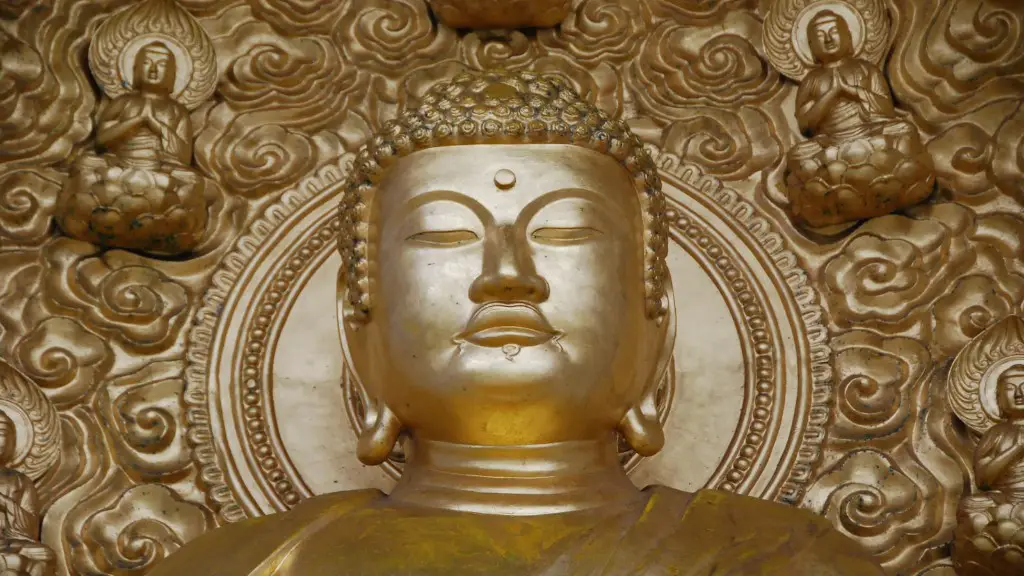Since its introduction to China in the first century CE, Buddhism has had a significant impact on Chinese society. From the start, it was able to find a place within the existing Chinese social and religious framework. This allowed for its relatively easy spread throughout the country. As Buddhism became more established, it began to influence different aspects of Chinese society, such as art, literature, and philosophy. In more recent times, Buddhism has played a role in the development of the Chinese feminist and environmental movements.
Buddhism first arrived in China during the Han dynasty, brought by Indian missionaries. It then became increasingly popular, and by the time of the Tang dynasty it had become the dominant religion in China. Buddhism has had a profound impact on Chinese society and culture, influencing such things as art, literature, philosophy, and morality.
How did Buddhism become influential in China?
Buddhism was brought to China by Buddhist monks from India during the latter part of the Han dynasty (ca 150 CE). It took over a century to become assimilated into Chinese culture. One of the key forces of Buddhism’s success was Daoism. Daoism provided a spiritual and philosophical framework that was compatible with Buddhism, and the two religions coexisted peacefully for many centuries.
Buddhism was a social and religious force that had a profound impact on the communities it touched. It challenged the existing social hierarchy, created opportunities for women, and gave individuals of all classes a role in spiritual practice. In doing so, it changed the way these communities were organized and how they functioned. Over time, as Buddhism changed each new society it came into contact with, so too did Buddhism itself change.
What are the core beliefs of Buddhism and how did Buddhism shape Chinese society
The core beliefs of Buddhism are the four noble truths, which come down to how suffering affects an individual. This shaped Chinese society because people began to question people in power specifically the emperor.
At this time in China, many people were suffering and dying. Buddhism addressed these questions in a way that China’s own traditions did not. This attracted many people to the religion.
What impact did Buddhism have on Chinese society?
Buddhism heavily influenced China and has shaped it into the nation it is today. Through the spread of Buddhism, other philosophies in China have also changed and developed. Adopting the Buddhist way of paying homage through art, Taoist art began being created and China developed its architectural culture.
Buddhism was a powerful intellectual force in China; monastic establishments proliferated, and Buddhism became established among the peasantry. Thus, it is not surprising that, when the Sui dynasty (581–618) established its rule over a reunified China, Buddhism flourished as a state religion.
How did Buddhism help shape culture?
There is no denying that Buddhism has had a great impact on Indian culture and society. It has promoted egalitarianism and non-violence, and has had a positive impact on the intellectual, artistic, literary, and architectural fields. Even though it is no longer practiced in India, its impact on the mindset of people is still evident.
Buddhism was a major philosophical and religious force in India for many centuries. It influenced Indian society away from social hierarchy and towards equality, and it allowed and gave equality to women and Shudras. It also challenged the orthodox philosophy of that era. Its teachings stated that one is responsible for his actions and destiny.
How does Buddhism contribute to culture
Buddhist culture is exemplified through Buddhist art, Buddhist architecture, Buddhist music and Buddhist cuisine. As Buddhism expanded from the Indian subcontinent, it adopted artistic and cultural elements of host countries in other parts of Asia. For example, Buddhist art and architecture in East Asia show significant influence from Chinese and Japanese cultures, while Buddhist art in Southeast Asia shows influence from Hindu and Southeast Asian cultures. Buddhist music also shows significant regional diversity, with music from East Asia often being more meditative and slow, while music from Southeast Asia is often more upbeat and lively. Buddhist cuisine also varies widely by region, with dishes from East Asia often being more basic and simple, while Southeast Asian Buddhist cuisine is often more complex and flavorsome.
The Laughing Buddha is the ultimate symbol of happiness and good fortune. He represents the removal of all problems and the fulfillment of all desires. He is a powerful symbol of wealth and success in both private and career life. The Laughing Buddha brings happiness and joy to everyone he meets.
How did Buddhism influence Chinese culture quizlet?
Buddhism was a religion that first started in India and later diffused into China. It had a large impact on Chinese culture, influencing art, literature, and architecture. This is seen most prominently in the Tang and Song Dynasties. The Han Dynasty collapsed when China split into several rival kingdoms.
Buddhism is a religion that began in India. It is based on the teachings of Siddhartha Gautama, who is known as the Buddha. Buddhism is about finding the path to enlightenment. People can follow the path by following the Five precepts.
Was Buddhism popular in China
Buddhism was popular with all social classes and was very influential on Chinese culture. It was a religion that was practiced by people of all social classes and it had a great impact on Chinese culture.
It is interesting to see how Chinese people have reacted to the introduction of Buddhism into their country. Some have embraced it wholeheartedly and have defended its policies, while others have been more critical, scrutinizing its absence from past texts and using it as a scapegoat for political and social problems. Still others have remained relatively indifferent, wishing to meld the aspects of different belief systems in China to create a unique Chinese culture. Whatever their individual stance, it is clear that Buddhism has had a profound impact on the Chinese people and their society.
Why did Buddhism become popular in China quizlet?
Many poor farmers in China were unhappy with their rulers and the unjust civil service exam system. To escape their suffering, they turned to Buddhism which promised them a better life. However, due to the harsh conditions in China, many people were dying.
The practice of Buddhism places a heavy emphasis on the individual’s role in their own spiritual development. Every person is seen as the “scientist” responsible for testing and experimenting with different ways of thinking and living in order to find what brings them inner peace and happiness. This process of mental training is essential to Buddhist doctrine, and is believed to be the key to achieving true happiness.
Warp Up
There is no one answer to this question as Buddhism has shaped Chinese society in many different ways over the centuries. However, some of the most significant ways in which Buddhism has influenced Chinese culture include its impact on art, literature, philosophy, and morality.
Buddhism shaped Chinese society in a number of ways. It influenced the country’s architecture, art, and literature. It also had a hand in introducing new concepts and beliefs



